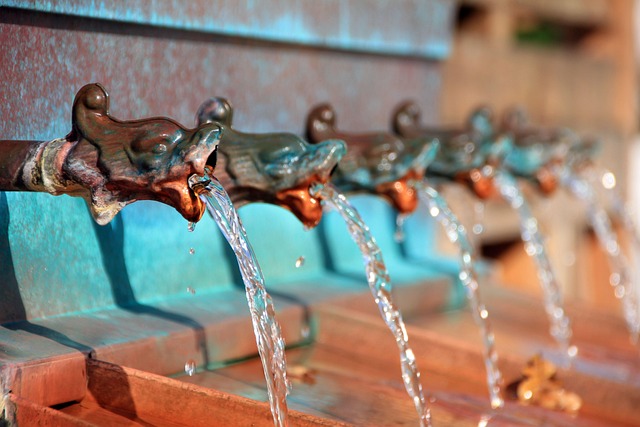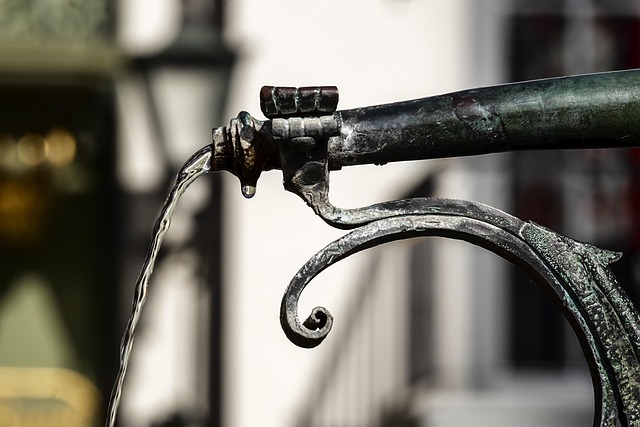Water-saving fountains offer an efficient, aesthetically pleasing outdoor solution, reducing water consumption with advanced technology while maintaining visual impact. Before installing, prepare your space for optimal performance by assessing sunlight, drainage, and maintenance accessibility. Professional installation involves meticulous planning, including site preparation, component assembly, and strategic placement, followed by operational testing. Regular maintenance, including inspections, cleaning, and checks for leaks or unusual noises, ensures top condition and maximum lifespan while preserving water quality.
Looking to enhance your outdoor space with the soothing sound and beauty of a fountain? Discover the benefits of professional installation for water-saving fountains. This comprehensive guide explores how these eco-friendly features can reduce water consumption while adding elegance to your yard or garden. From understanding different types to preparing your site and essential maintenance tips, learn how expert installation ensures optimal performance and longevity for your new water-saving fountain.
- Understanding Water-Saving Fountains: Benefits and Types
- Preparing Your Outdoor Space for Fountain Installation
- The Installation Process: Step-by-Step Guide
- Maintenance Tips for Optimal Performance and Longevity
Understanding Water-Saving Fountains: Benefits and Types

Water-saving fountains are designed to reduce water consumption while still providing a stunning outdoor feature. These fountains incorporate advanced technologies such as recirculating pumps and efficient nozzles, allowing for significant water savings compared to traditional models. The benefits extend beyond conservation; they also include lower operating costs and reduced maintenance overhead.
There are various types of water-saving fountains available, each catering to different aesthetic preferences and space constraints. Some models feature sleek, modern designs with minimalist lines, while others embrace more traditional styles. Jet sprays, cascading waterfalls, and multi-tiered displays are common features, offering both visual appeal and water-efficient performance.
Preparing Your Outdoor Space for Fountain Installation

Before installing your outdoor fountain, it’s crucial to prepare your space to ensure a smooth and efficient process. Start by assessing the area where the fountain will be placed, considering factors like sunlight exposure, proximity to electrical outlets, and drainage. Since water-saving fountains are designed to reduce waste, make sure your chosen location has adequate drainage to prevent pooling and potential damage. Clear any debris or obstructions from the site, ensuring a clear path for both installation and future maintenance.
Additionally, prepare the surrounding area by trimming any overhanging branches or shrubs that might interfere with the fountain’s operation or accessibility. This step is particularly important for water-saving models, as regular cleaning and maintenance are key to their efficiency. By getting your outdoor space ready, you lay the foundation for a successful installation and the optimal performance of your new water feature.
The Installation Process: Step-by-Step Guide

The professional installation of an outdoor fountain involves a series of precise steps to ensure optimal performance and aesthetic appeal. The process begins with site preparation, where experts assess the chosen location, considering factors like drainage and existing infrastructure. For water-saving fountains, this step is crucial as it includes setting up an efficient recirculation system to minimize water wastage.
Next, the fountain components are carefully assembled, including the base, pump, filter (if applicable), and water distribution system. This assembly requires expertise to ensure proper alignment and functionality. Once ready, the fountain is positioned at the desired height and angle, factoring in the natural landscape to create a visually pleasing effect. The final steps involve connecting the fountain to a power source, testing its operation, and making any necessary adjustments for a seamless water flow experience.
Maintenance Tips for Optimal Performance and Longevity

Regular maintenance is key to ensuring your outdoor fountain remains in top condition, conserves water, and extends its lifespan. Start by inspecting the fountain for any signs of damage or wear, addressing issues promptly to prevent further complications. Keep the surrounding area clean, removing debris that could clog the system or affect water flow.
For optimal performance, regularly clean the fountain’s components, especially the nozzles and filters. This prevents mineral buildup, ensuring a steady water spray. In addition, check the pump and motor for any leaks or unusual noises; addressing these issues early can save you from costly repairs later. Consider using eco-friendly cleaning products to maintain water quality and make your fountain a sustainable choice, aligning with the benefits of a water-saving fountain.
The professional installation of outdoor fountains, especially water-saving models, offers a sustainable and visually appealing solution for any outdoor space. By understanding the benefits and various types available, preparing your area accordingly, and following a meticulous installation process, you can ensure optimal performance and longevity. Regular maintenance will further enhance these advantages, making your water-saving fountain a cherished addition to your outdoor environment for years to come.
